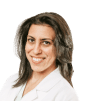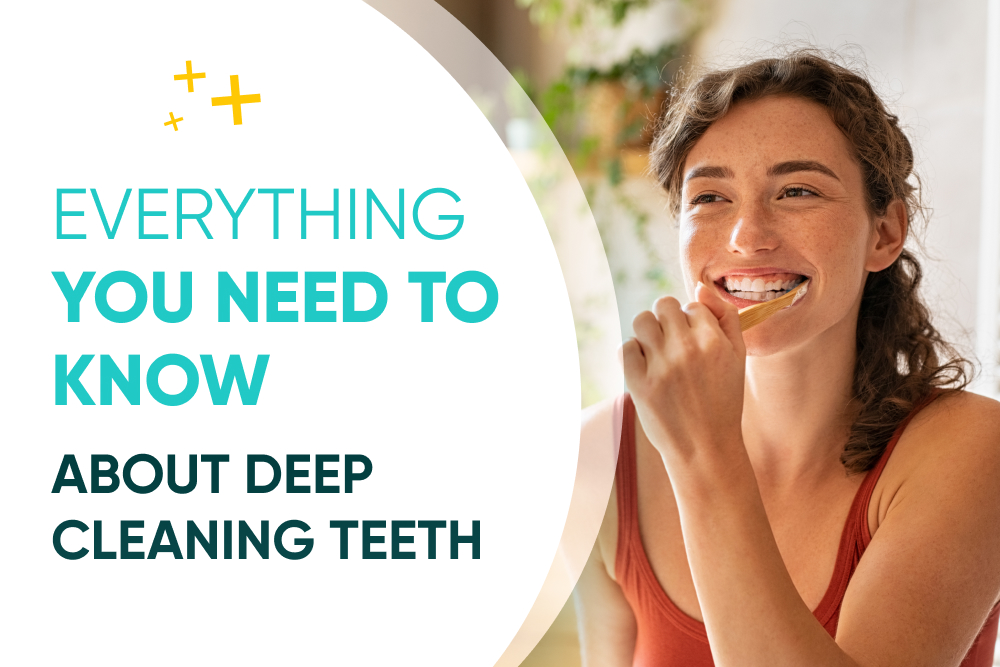FIRST, WHAT IS A CROSSBITE?
- Anterior crossbite
In an anterior crossbite, the lower front teeth sit in front of the upper front teeth. This can cause the upper lip to jut forward and lead to excessive wear of the front teeth. Anterior crossbites are often caused by thumb-sucking or pacifier use as a baby, which pushes the upper front teeth back. - Posterior crossbite
In a posterior crossbite, the lower molars sit inside the upper molars. This can cause uneven chewing forces, excess wear of the back teeth, and even TMJ pain. Posterior crossbites are usually caused by a narrow upper jaw, crowding, or a shift in jaw alignment.
SYMPTOMS OF CROSSBITES
Common symptoms of a crossbite include:
- Teeth that are misaligned – the upper and lower teeth do not meet properly. The lower teeth sit inside the upper teeth.
- Jaw pain or discomfort – the improper alignment can put a strain on the jaw joints and muscles.
- Wearing down of teeth – the misaligned teeth can rub against each other unevenly leading to excessive wear and tear.
- Difficulty chewing – the improper bite makes it difficult to chew food effectively.
- Speech problems – the misalignment can affect tongue position and lead to speech issues like a lisp.
- Facial asymmetry – in severe or longstanding cases, the crossbite can affect the growth of the upper or lower jaw leading to an uneven appearance of the face.
CAUSES OF CROSSBITE
Here are some of the reasons why crossbites may occur.
- Genetics: Crossbites run in families, so genetics may play a role in a person’s risk of developing a crossbite.
- Jaw misalignment: The upper and lower jaws may be misaligned, causing the teeth to meet in an abnormal way.
- Teeth crowding: There may be too many teeth for the available space in the jaws, causing teeth to be crowded and out of normal alignment.
- Bad oral habits: Habits like thumb sucking, pacifier use, and tongue thrusting in childhood can put pressure on teeth and affect the proper growth and development of the jaws and teeth.
- Trauma or injury: A trauma or injury to the teeth or jaws can cause a crossbite to develop.
- Missing teeth: This can sometimes lead to the shifting of remaining teeth, which can then result in a crossbite. Treatment may involve addressing the missing teeth.
WHAT ARE YOUR OPTIONS FOR CROSSBITE CORRECTION
Traditional braces
This is a common treatment for crossbites, especially in children and adolescents. The orthodontist uses braces to apply pressure to move the teeth into the proper position. This may involve widening the upper jaw or narrowing the lower jaw, depending on the type of crossbite. Treatment time will vary depending on the severity of the crossbite and the patient’s age.
Invisalign
Invisalign is a system of clear plastic aligners that are used to gradually shift teeth into the proper position to correct a crossbite. The aligners are custom-made to apply pressure on specific teeth to move them over time. Invisalign may be a good option for adults or teens who want a more discreet treatment. However, Invisalign may not be effective for severe or complex crossbites, in which case braces or surgery may be necessary.
Palatal expanders
For a narrow upper jaw, a palatal expander can be used. This is a device that is attached to the upper teeth and slowly widens the palate and upper jaw over time, creating more space for the teeth to shift into proper alignment.
Headgear
In a crossbite, the headgear typically redirects the growth of the upper jaw to widen it, allowing front teeth to emerge into a normal bite relationship with the lower teeth. It is often combined with other appliances like palatal expanders or braces as part of a comprehensive crossbite treatment plan.
Herbst appliance
This is a fixed orthodontic appliance used to correct anterior crossbite by redirecting jaw growth. It consists of metal bands attached to the upper and lower molars, connected by a telescoping mechanism. The lower jaw is held slightly forward of the upper jaw by the appliance, which stimulates growth in a forward direction and widens the upper arch.
Bonding or veneers
For minor crossbites affecting only one or a few teeth, cosmetic solutions like dental bonding or porcelain veneers can be used to reshape the appearance of the teeth and correct the crossbite. These do not actually move the teeth or jaws, but simply cover up the crossbite.
Jaw surgery
In severe or persistent cases, jaw surgery may be recommended to correct a misaligned jaw. The surgery involves reshaping the upper jaw, lower jaw, or both to properly align the bite and jaw. This is generally only done for adult patients when other options have not worked or are not feasible.
WHAT ARE THE LONG-TERM BENEFITS OF CROSSBITE TREATMENT
Having a crossbite corrected, whether in a child or adult, can lead to significant benefits. When the bite is correctly aligned through orthodontic treatment or other methods, the teeth are able to function as nature intended. This often translates to:
- Better ability to chew and bite forcefully, allowing for a wider range of foods in the diet and less breakage of food into small pieces. No more need for tearing meat or ripping bagels—you can take satisfying bites!
- Straight teeth that are easier to clean. When teeth are straight and the upper and lower jaws match well, smiles tend to appear more attractive, and teeth can be flossed and brushed more effectively. Fewer hard-to-reach areas can mean a lower risk of decay or gum disease.
- Less strain is placed on the jaw joints (TMJs). If the jaws are mismatched, the joints have to work harder to accommodate the bad bite, which can lead to pain, clicking sounds, and limited jaw mobility over time. Correcting a crossbite takes the pressure off the TMJs and helps ensure healthy, pain-free function for years to come.
CROSSBITE TREATMENT IN NORTH HOLLYWOOD
FAQ
How to fix a crossbite?
The most common ways to correct a crossbite involve orthodontic treatments like metal braces, Invisalign, and expanders for growing kids and teens. Braces alone or surgery may be necessary for adults. The specific approach depends on age, mouth structure, and severity.
Can Invisalign fix crossbite?
Yes, Invisalign can be effective at fixing a crossbite. Invisalign uses a series of custom-made, tight-fitting mouth guards called aligners that are worn for 22-23 hours daily. Each aligner is adjusted slightly, and over time this gradual shifting of the teeth corrects the crossbite. Since aligners are nearly invisible and removable, Invisalign can be a more cosmetically appealing and comfortable option than traditional braces for many adults and older teens.
How do crossbite braces work?
Crossbite braces work by applying consistent pressure over time to gradually shift teeth into the proper alignment. An orthodontist will attach braces to the teeth, which are connected by a wire. The orthodontist is able to tighten this wire, which adjusts the pressure being applied to the teeth. With monthly adjustments, the teeth slowly move into the correct position.
Can crossbite correct itself?
It is unlikely that a crossbite will correct itself without treatment. While a mild crossbite in a young child with developing teeth and jaws may self-correct as the mouth grows, more significant crossbites typically require orthodontic intervention to remedy. Without treatment, a crossbite can lead to asymmetric jaw growth, abnormal tooth wear, and other dental problems.




